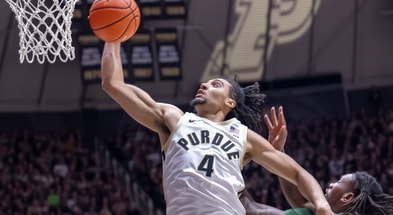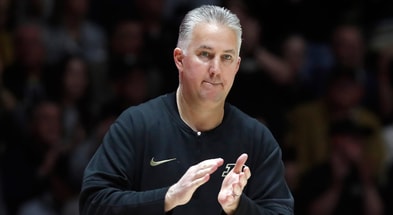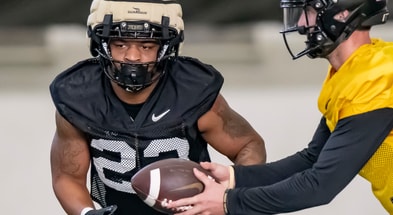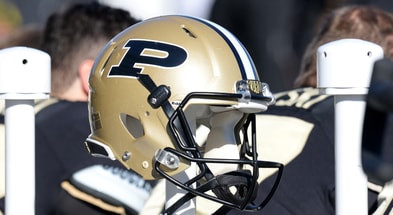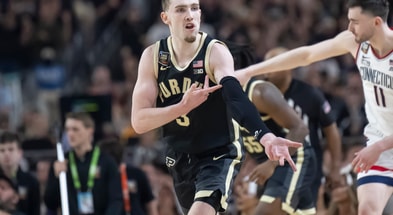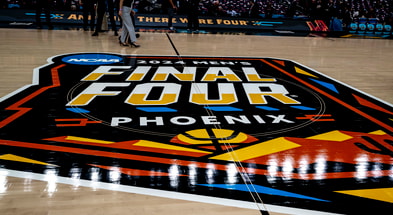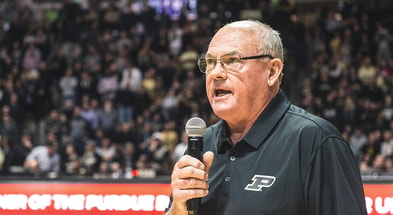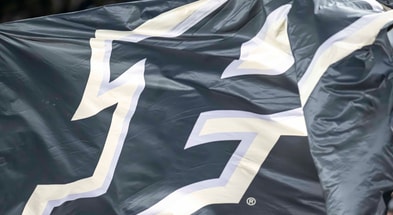Express Five Factors: Five things that could loom large for Purdue in postseason
As the postseason commences, GoldandBlack.com breaks down five less-than-obvious little things that will loom large Purdue in single-elimination plat at both the Big Ten and NCAA Tournaments.
There’s obvious stuff — turnovers, shooting, Zach Edey‘s play, etc. — but this is more nuance than anything.

CAMDEN HEIDE’S DEFENSIVE VERSATILITY
Rewind to Purdue’s excellent win over Texas in Milwaukee two seasons ago and recall how much of a difference Ethan Morton‘s plug-and-play defensive versatility mattered against Marcus Carr. Morton is still around, along with Heide, who’s sort of become Morton 2.0, because he is so much bigger and stronger and more athletic.
Heide has guarded everything from point guards to wings to forwards, and whatever Marcus Domask is. Domask was one of the toughest matchups in the Big Ten this season; Heide did the best job of anyone Purdue had against him.
The matchups game really matter come the NCAA Tournament.
TREY KAUFMAN-RENN ON THE BLOCK
Zach Edey can’t play 40 minutes, and when he goes to the bench, it automatically becomes a critical stretch for Purdue. The Boilermakers have done a great job down the home stretch of the season hanging in without Edey on the floor, making just enough shots and getting just enough stops and rebounds to not allow opponents to seize upon windows of opportunity.
Without Edey in the game, Purdue’s best bet for low-post, go-to offensive presence is Trey Kaufman-Renn, as long as he’s out there during those stretches obviously.
TKR has spent all season as the starter to Mason Gillis‘ closer, but the sophomore is more than capable of being a featured player. He averages 15 points per 40 minutes and has a penchant for drawing fouls.
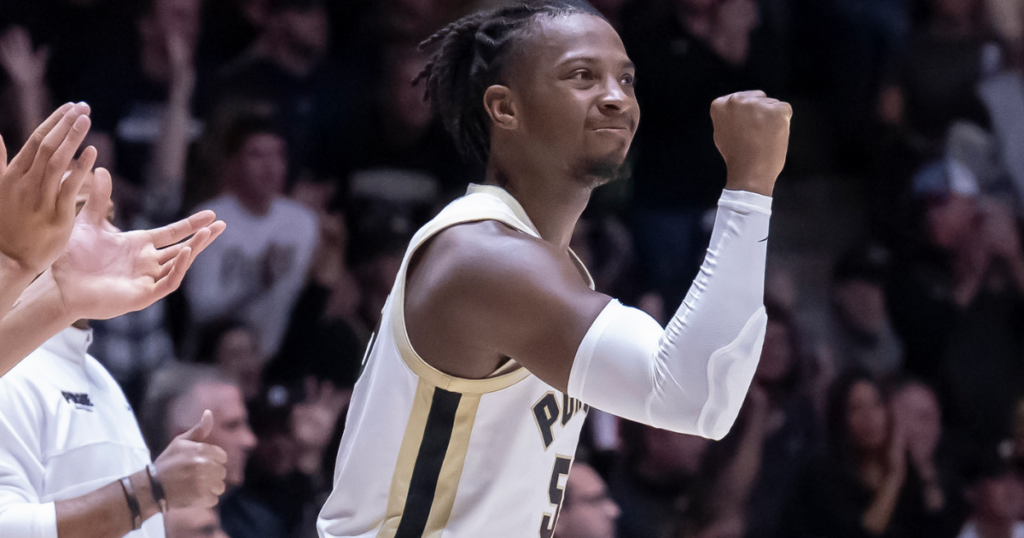
LANCE JONES’ DECISION-MAKING
Lance Jones‘ aggressiveness has been a net positive by a wide margin this season, but everything is magnified now. A couple hasty threes here and there have been the cost of doing business for Purdue, the trade-off for his transformational productivity.
Further, it just seems like having multiple ball-handlers and decision-makers matters a little more in the postseason, when you might see eclectic defensive looks and have to adjust accordingly on the fly.
All Purdue’s guards are responsible for steering clear of this team’s greatest threat: Turnovers.
So is the post operation, obviously.
RIM PROTECTION SANS ZACH EDEY
Similar to the offensive concern when Edey goes to the bench there are defensive issues that are even more acute. When Edey has gone to the bench the past several games, opponents have gone right at the rim, whether it be off the dribble or posting up a variety of positions.
Purdue’s defense is built around Edey having everyone’s back. Without him, it becomes imperative that Purdue’s help against the dribble or in the post be pristine, because there’s no skyscraper standing in the lane to shut it down.
LONG DEFENSIVE REBOUNDS
The ball bounces funny sometimes, but Purdue opponents have gotten their share of long offensive rebounds this season. That might be a back-handed compliment suggesting that the defense forced a tough shot, but come single-elimination season, every possession matters a little more so awareness from everyone out there does also. And hustle and block-outs, obviously.
As much as points off turnovers have been part of the formula to beat Purdue, there have been games too where the second-chance points hit double-digits.
It starts with containing the dribble and maintaining proper rebounding balance, as coaches call it.
This may matter most against early-round NCAA opponents, who may be smaller, try to spread Purdue and shoot a lot of threes. That was the nature of some of the Boilermakers’ buy games months ago against low-major-conference teams.



